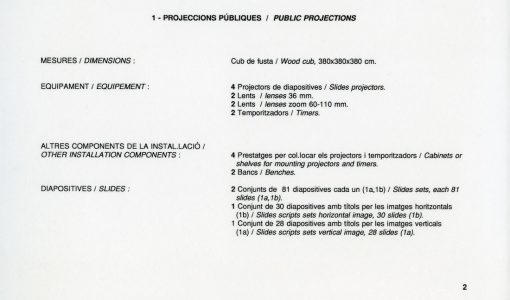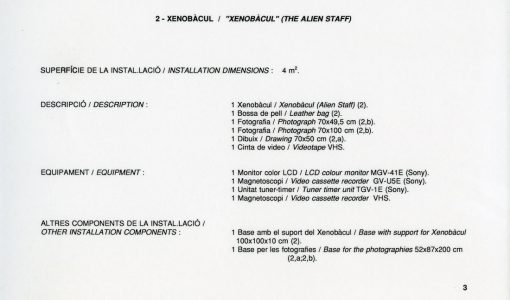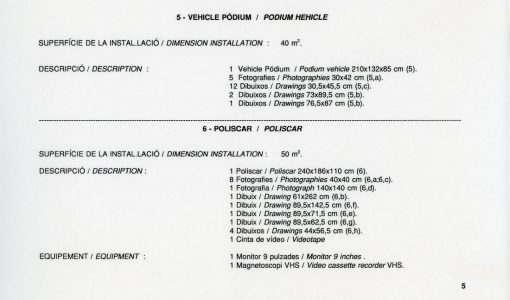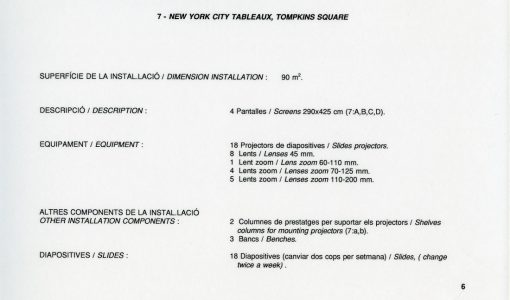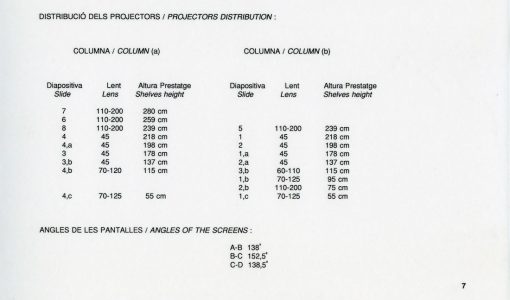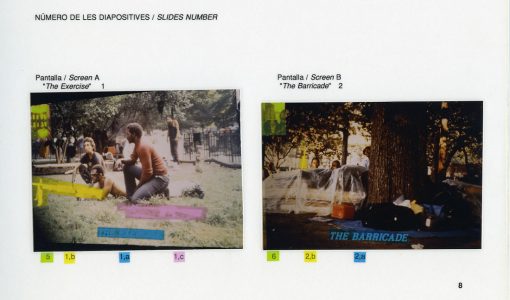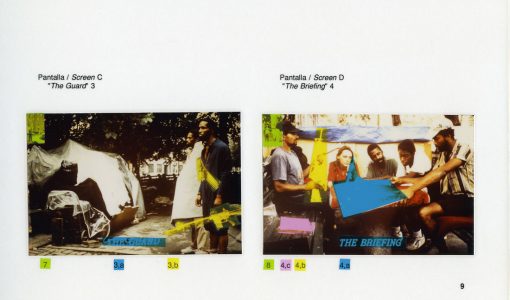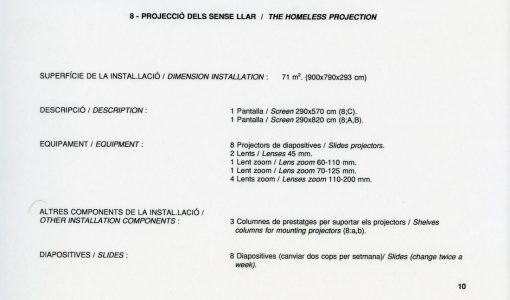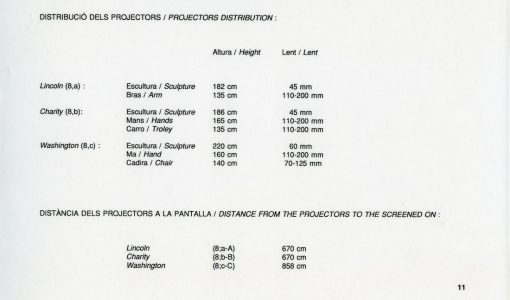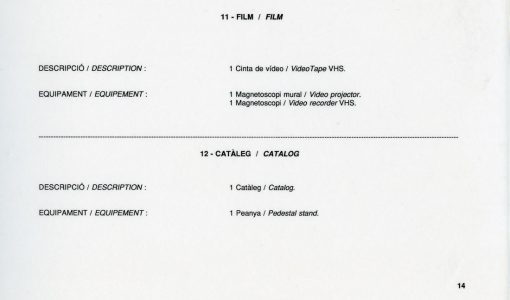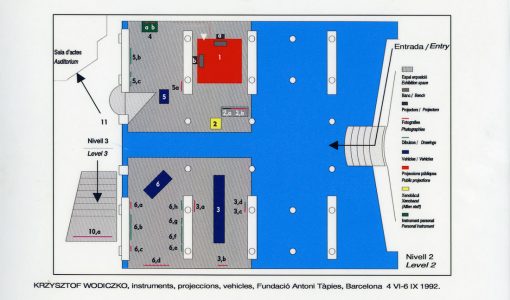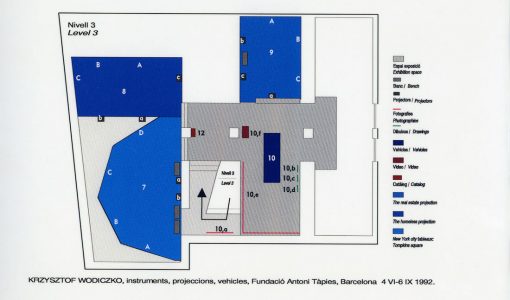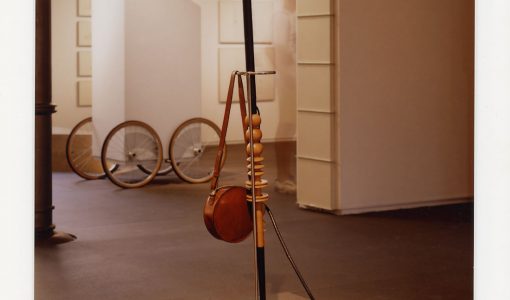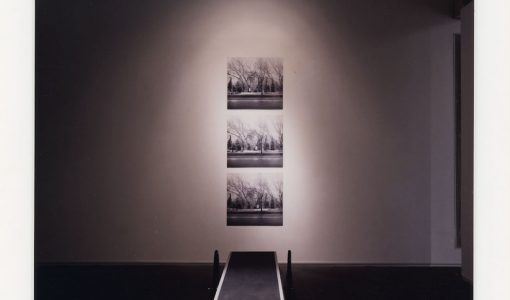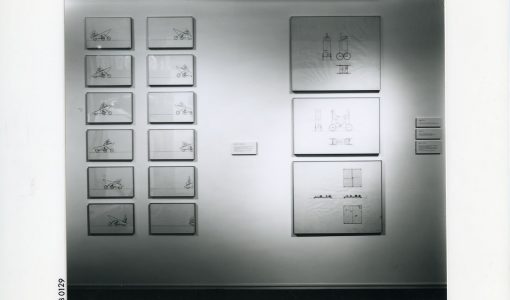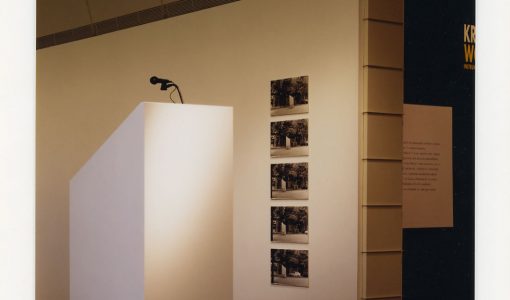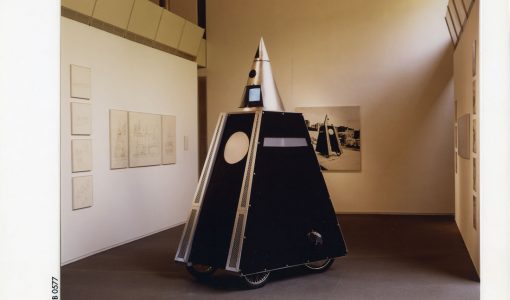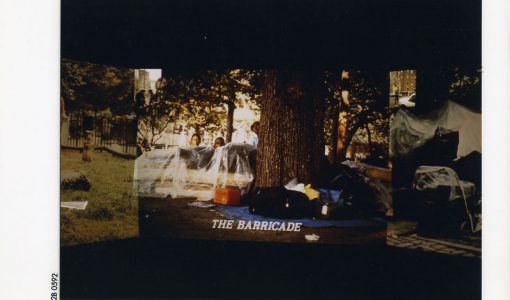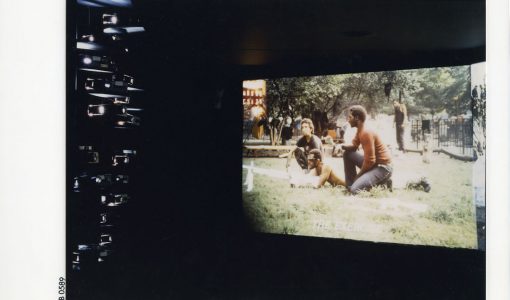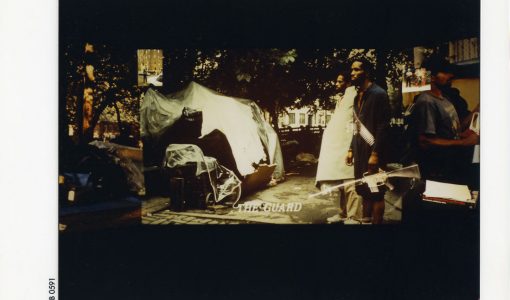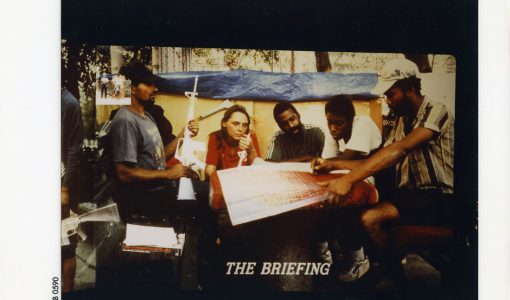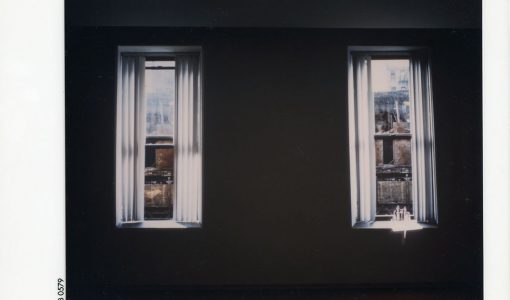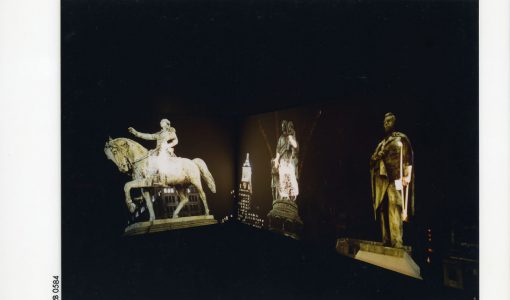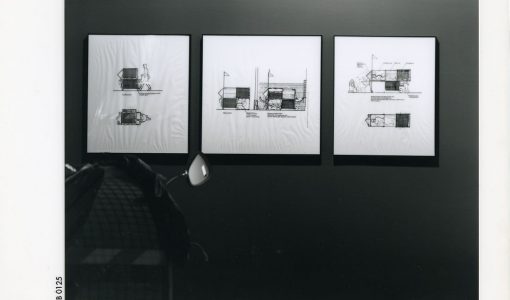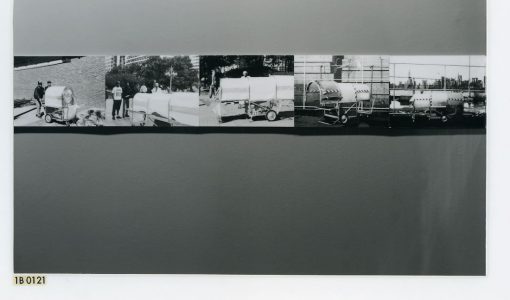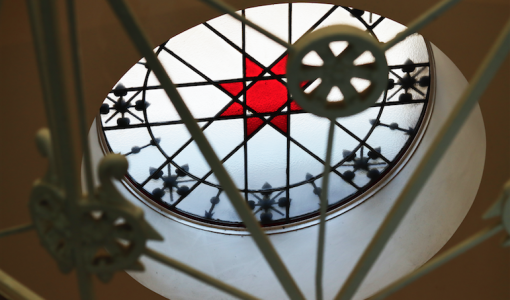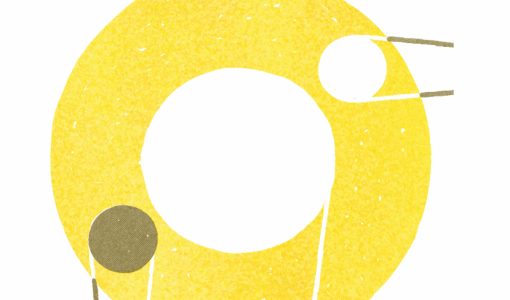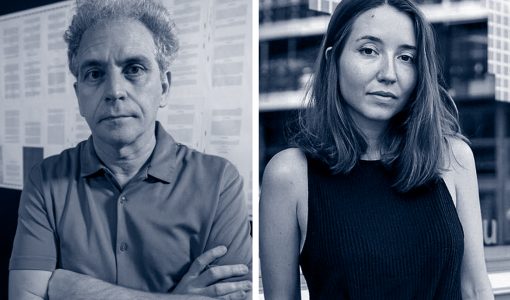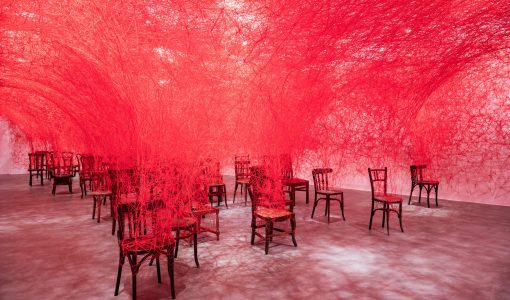
Krzysztof Wodiczko. Instruments, Projections, Vehicles
Home
›
Exhibitions
›
Krzysztof Wodiczko. Instruments, Projections, Vehicles
Krzysztof Wodiczko (Warsaw, 1943) graduated in industrial design from the Warsaw School of Fine Arts in 1968. A few years later he exhibited for the first time at the Wspólczesna Gallery in Warsaw. Since then his projections and socio-aesthetic projects have appeared in numerous places all over the world.
In 1977 he left Poland to live in Canada. At the moment he lives in New York, although during the 1991-92 academic year he has been teaching in Paris at the invitation of the École nationale supérieure des Beaux-Arts (ENSBA). His artistic career cannot be separated from his work as a teacher.
Wodiczko became internationally famous during the eighties for his many projections of giant-sized images on buildings and monuments all over the world.
The images that Krzysztof Wodiczko projects are integrated into the architecture of the building or monument, whether a façade, an arch, a column, a flight of steps, or a statue. These buildings or monuments have often become part of the scenery for passers-by. Through images the artist raises questions that renew and update the building’s basic function. In this way he enriches, transforms and manipulates the initial message of public architecture in order to shock, to denounce, and to arouse public opinion.
In 1985 Wodiczko projected a swastika onto the South African House in London. He projected the image of open hands onto the façade of the Whitney Museum in New York, with the words “Glasnost in USA” on the palms. In what was then East Berlin Wodiczko carried out a projection using the statue of Lenin as part of an exhibition organised by the DAAD in 1990: using a slide he transformed the legendary revolutionary leader into a tramp dragging along his possessions.
However, Krzysztof Wodiczko’s production is not limited to these public projections. His training as an industrial designer has allowed him to create a type of mobile object which also falls within the category of “public art”, with its obvious critical content, developed by the artist. The Homeless Vehicle and the Poliscar are perhaps the best known designs among the various prototypes that Wodiczko has created. These vehicles are a sort of trolley which allow the homeless to move their possessions about and also provides them with a place to live.
Whether they be projections or vehicles, there is a common denominator behind the works of Krzysztof Wodiczko: the projects’ political, social, and economic context. Wodiczko always creates according to the circumstances surrounding the walls or monuments he projects the images on, or according to the characteristics of the user he creates his vehicles for. His ultimate goal is to reveal the contradictions of our society, something the majority of citizens often prefer to ignore.
Therefore, for example, his most recent works have dealt with the problems of the homeless in New York. On other occasions he has dealt with the exodus of Soviet Jews to Israel, the Gulf War, or property speculation in the big cities.
Most recently, perhaps influenced by his stay in Paris, Wodiczko has come up with new creations based on the problems created in Europe by immigration from outside the Community. Barcelona is familiar with the problems dealt with in this project, which is receiving its first showing here.
The exhibition presented by the Fundació Antoni Tàpies includes various works from different moments in Krzysztof Wodiczko’s career and several prototypes of the vehicles designed by this polish artist. The mainstay of the exhibition is The Alien Staff project based, as has been mentioned above, on the contradictions that have arisen as a result of immigration into Europe. The exhibition has been mounted with the assistance of the Muzeum Sztuki of Lodz, the New Museum of Contemporary Art of New York, and the Exit Art Gallery of New York.
To accompany the exhibition the Fundació Antoni Tàpies has published a catalogue with texts by Manuel J. Borja-Villel, Bruce W. Ferguson, Denis Hollier, David Lurie, Yves Michaud, Patrick Wright, and Krzysztof Wodiczko.
The film Krzysztof Wodiczko, Projections, which is directed by the Canadian Derek May and produced by the National Film Board of Canada, is being projected daily in the Auditorium. The film shows a range of the projections performed by this polemical artist and provides a portrait of a creator who uses the audio-visual arts to reveal social and political problems that are ignored or covered up by the authorities and public opinion.
Galeria d'imatges
Dates
05.06.1992 – 06.08.1992
Curator
Manuel J. Borja-Villel.
Artist
Krzysztof Wodiczko.



